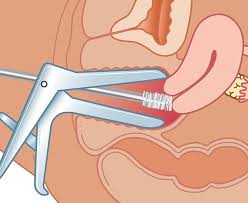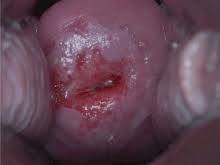Pap Test: Importance, Procedure, and Early Detection of Cervical Cancer
A Pap smear, also known as a Pap test, is a screening process used to detect abnormal cells in the cervix. During the procedure, a doctor collects a sample of cells from the surface of the cervix to check for any changes or abnormalities. A Pap smear is an important tool in the early detection of cervical cancer, as it can detect pre-cancerous changes in the cervix. Regular Pap smears, as recommended by your doctor, are the most effective way to ensure early detection and treatment of any abnormalities. Please keep reading for details on the following topics:
Overview of a pap test
The frequency of Pap smears
Preparation for a Pap Smear
Highlights of a Pap smear
Deciphering Pap smear results
Myths and Facts of Pap Smears:

Overview of a pap test
A Pap smear, or Pap test, is a routine screening procedure to detect abnormal cells on the cervix. During the test, a healthcare provider collects cells from the cervix, which are then examined for any signs of abnormalities or precancerous changes. This screening is crucial for early detection and treatment of cervical cancer, potentially saving lives. It’s typically recommended for women starting at age 21, or earlier if there are specific risk factors or concerns. Regular Pap tests, along with HPV testing if recommended, play a key role in maintaining women’s health.
The frequency of Pap smears depends on several factors, including age, medical history, and individual risk factors. Here are general guidelines:
- Age 21 to 29:
- Women in this age group should have a Pap smear every one to three years.
- Age 30 to 65:
- Women in this age group can choose to have a Pap smear every three years or undergo co-testing, which involves both a Pap smear and an HPV test, every three to five years. Co-testing is preferred by some healthcare providers as it provides comprehensive screening for cervical cancer and HPV infections.
- Age 65 and older:
- Women in this age group who have had regular screening with normal results may not need to continue Pap smears. However, healthcare providers may recommend continued screening for women with a history of abnormal Pap smear results or other risk factors.
-
Women with a history of cervical cancer or precancerous lesions:
- Women with a history of cervical cancer or precancerous lesions may require more frequent Pap smears as determined by their healthcare provider.
Preparation for a Pap Smear:
The PAP test is a simple and effective way to screen for cervical cancer and it is recommended that women over the age of 21 receive one on an annual basis as part of their routine preventive care. Early detection of precancerous cell changes through the Pap test can help reduce the risk of developing cervical cancer. Here are the recommended guidelines:
-
Avoid using vaginal medications, douching or tub bathing for 24 hours before the test: Douching or tub bathing can introduce external substances and disrupt the natural flora of the vagina, potentially affecting the test results.
- Avoid using any vaginal creams or foams for 48 hours prior to the test: Vaginal creams or foams may contain substances that can interfere with the culture test or affect the growth of microorganisms in the sample.
- Refrain from sexual intercourse for 24 to 48 hours before the test: Sexual intercourse can introduce external microorganisms into the vagina, potentially contaminating the sample and affecting the test results.
-
Do not schedule the test during a menstrual period: Menstrual blood can interfere with the culture test and affect the accuracy of the results. It’s best to schedule the test for a time when you are not menstruating.
- It’s important to inform your doctor about any vaginal infections or conditions you may have before undergoing any procedures or tests. Additionally, don’t hesitate to relax and communicate any concerns or questions you have with your healthcare provider before the procedure.
Highlights of a Pap smear
-
A test that collects cells from the cervix to detect irregularities: The Pap smear is a screening procedure designed to collect cells from the cervix to identify any abnormal changes that could indicate the presence of cervical cancer or precancerous conditions.
- The woman will lay comfortably on an examination table with her knees bent: During the Pap smear, the woman lies on her back on an examination table with her knees bent and feet placed in stirrups for support.
- A speculum will be inserted into the vagina to expose the cervix: A speculum, a plastic or metal instrument, is gently inserted into the vagina to hold the vaginal walls apart, allowing visualization of the cervix.
- A sterile brush is used to swab or scrape the cervix to collect cells: A small brush or spatula is used to gently collect cells from the surface of the cervix. The healthcare provider may also use a broom-like device to obtain a sample of cells from the transformation zone, where most cervical cancers and precancers originate.
- Once the swab is taken, the cells are put in a liquid and sent to a lab for testing: The collected cells are placed in a liquid solution (transport medium) and sent to a laboratory for examination under a microscope. Laboratory technicians analyze the cells for any abnormalities or signs of cervical cancer.
-
Further investigation is necessary for abnormal results: If abnormalities are detected on the Pap smear, further evaluation, such as colposcopy (visual examination of the cervix with magnification) or biopsy (collection of tissue samples for examination), may be recommended to determine the cause of the abnormal results and guide appropriate management.
Deciphering Pap smear results
Generally, results are classified as normal, abnormal, or unsatisfactory.
Normal results indicate no signs of abnormal cell changes.
Abnormal results may indicate the presence of abnormal cells, which could be categorized as:
- atypical squamous cells of undetermined significance (ASCUS)
- low-grade squamous intraepithelial lesions (LSIL),
- high-grade squamous intraepithelial lesions (HSIL),
- carcinoma.
Further testing or follow-up may be needed based on the severity of the abnormalities.
Unsatisfactory results mean the sample collected was inadequate for evaluation, requiring a repeat test.

-
Atypical Squamous Cells of Undetermined Significance (ASCUS):
- ASCUS indicates that some of the squamous cells on the cervix appear abnormal, but the changes are not clearly indicative of precancerous or cancerous cells. It’s a common finding in Pap smear results and often requires further investigation or follow-up testing.
- Low-Grade Squamous Intraepithelial Lesions (LSIL):
- LSIL refers to the presence of abnormal changes in the squamous cells of the cervix that are considered to be low-grade or mild. These changes may be caused by human papillomavirus (HPV) infection and can sometimes resolve on their own without treatment. However, LSIL may also progress to more severe abnormalities if left untreated.
- High-Grade Squamous Intraepithelial Lesions (HSIL):
- HSIL indicates the presence of more significant and potentially precancerous changes in the squamous cells of the cervix. These abnormalities are considered to be moderate to severe and have a higher risk of progressing to cervical cancer if not treated promptly.
-
Carcinoma:
- Carcinoma refers to cancerous cells that have developed in the cervix. It indicates the presence of invasive cancer, which has the potential to spread beyond the cervix to other parts of the body if not diagnosed and treated early. Carcinoma may be detected through Pap smear results or other diagnostic tests, such as biopsies.
Regular Pap smears are crucial for early detection and prevention of cervical cancer. It’s essential to discuss results with a healthcare provider for proper interpretation and guidance regarding any necessary follow-up steps or treatment.
Myths and Facts of Pap Smears:
Myth: Pap smears are painful. Fact: Pap smears are generally not painful, but you may feel some discomfort or pressure during the procedure.
Myth: Pap smears are only necessary if you’re sexually active. Fact: Pap smears are recommended for all individuals with a cervix, regardless of sexual activity, to screen for cervical cancer.
Myth: Pap smears test for all sexually transmitted infections (STIs). Fact: Pap smears specifically screen for abnormal cervical cells and are not designed to detect STIs. Additional tests may be needed for STI screening.
Myth: If you’ve had the HPV vaccine, you don’t need Pap smears. Fact: The HPV vaccine reduces the risk of certain HPV-related cancers but does not eliminate the need for regular Pap smears as part of cervical cancer screening.
Myth: You only need a Pap smear if you’re over 21. Fact: Pap smear guidelines vary by country, but screening is typically recommended for individuals with a cervix starting at age 21 or when they become sexually active, whichever comes first.
Myth: Pap smears need to be done annually. Fact: The frequency of Pap smears depends on your age, medical history, and risk factors. In many cases, screening every 3-5 years is sufficient.
Myth: Pap smears are 100% accurate. Fact: While Pap smears are highly effective in detecting abnormal cervical cells, they are not infallible. False negatives and false positives can occur, so follow-up testing may be necessary for confirmation.
Myth: Pap smears diagnose cervical cancer. Fact: Pap smears identify abnormal cervical cells that could develop into cancer if left untreated. Further testing, such as a biopsy, is needed to diagnose cervical cancer definitively.
Myth: Pap smears are unnecessary after a hysterectomy. Fact: The need for Pap smears after a hysterectomy depends on the type of hysterectomy and the reason for it. In some cases, Pap smears may still be recommended to monitor for vaginal or cervical changes.
Disclaimer: The information provided in this content is for general informational purposes only. It is not intended as medical or healthcare advice, diagnosis, or treatment. Always seek the advice of a qualified healthcare professional with any questions you may have regarding a medical condition or healthcare decisions.

